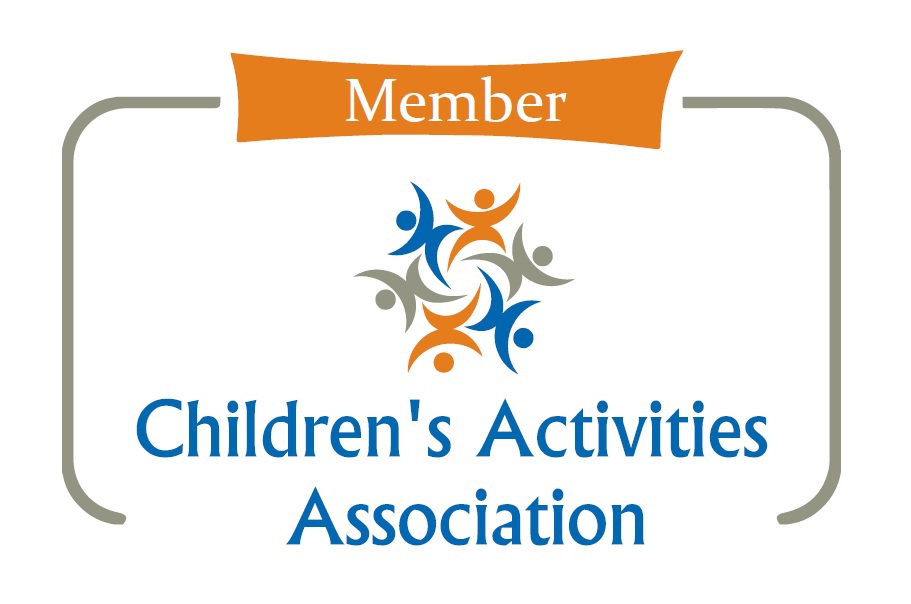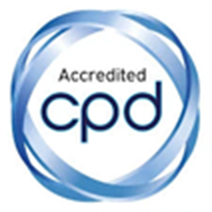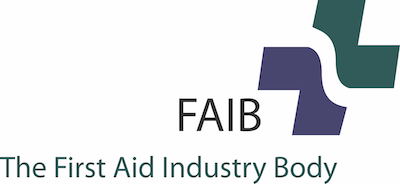Summer is here! When the sun is out and the sky is blue, we all think about planning our holidays and family fun days out, rather than our cleaning routine (don’t worry, we do too!). But did you know that summertime is actually a high season for germs? Some germs flourish more easily with warmer temperatures.
At Mini First Aid we know families with little kids face a constant battle against colds and tummy bugs. We also know that when it comes to using chemicals around the home you worry about your little ones' sensitive skin. So we got chatting with our friends from Nimble who make worry-free cleaning products specially for families: from laundry essentials to anti-bac cleaner, they are here to provide peace of mind for parents as they navigate the daily cleaning. Whether you’re out and about visiting families, at your holiday stay or on staycation, here’s a guide to keep things squeaky clean and germ-free around your little ones.
Why is a hygienic home so important?
Creating a hygienic home helps prevent the spread of infection amongst those you live with and care for. To understand how this works in more detail, let’s talk about the chain of infection.
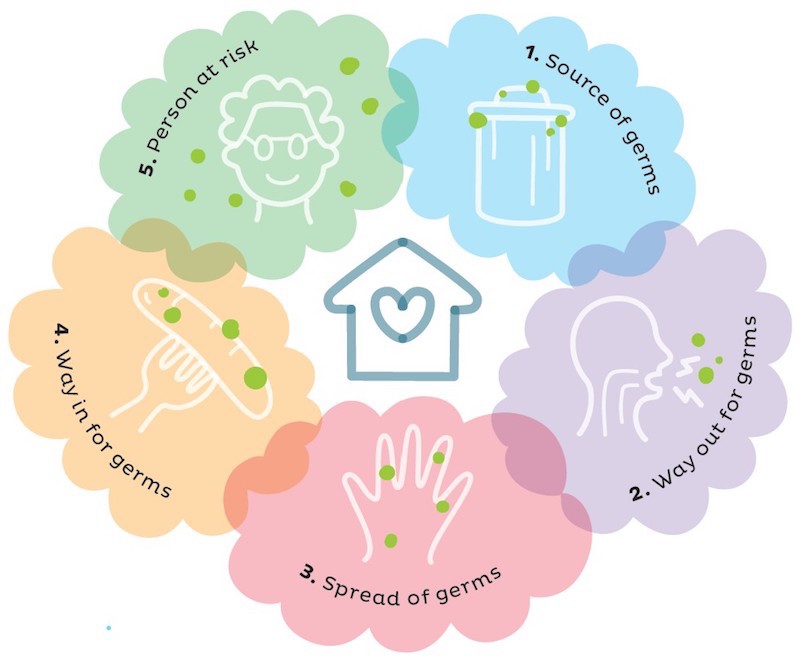
The chain of infection involves several links that all need to be in place for an infection to spread. So just like maintaining good personal hygiene, hygienically cleaning your home breaks the chain by reducing the spread of germs, helping to ensure the safety of your family.
Germs demystified – the science-y bit!
A germ is a microbe that causes disease. But not all microbes are germs which is a common misconception (tricky huh?). Here are some common examples to help make sense of it all:

In any home, there will be millions of microbes including some germs. It is not necessary to get rid of every single one of them, but instead, focus on getting rid of germs where and when there is a risk of them spreading and causing infection – this is what we mean by a hygienic home.
What is the difference between a clean home and a hygienic home?
Cleaning means removing visible dirt by vacuum cleaning, damp dusting, or washing with warm water and detergent. Hygienic cleaning on the other hand takes it up a level as it involves removing dirt AND getting rid of as many germs as possible, either by removing them or killing them by disinfecting then drying.
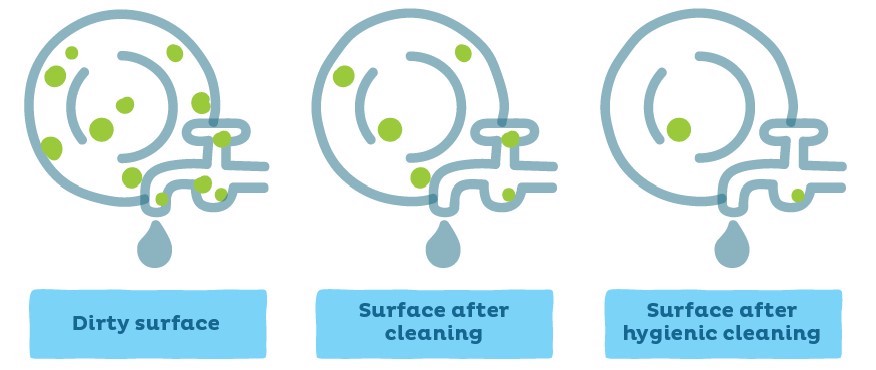
It is important to note that, for surfaces where the risk of spread of germs is low, cleaning is usually sufficient… phew!
So what surfaces should you be using hygienic cleaning on?
Frequently touched surfaces where there is both the possibility of contamination and spreading should be regularly cleaned and disinfected.
These include:
- Taps
- Toilet handles, toilet seat and lid
- Tables
- Highchairs
- Door handles
- Kitchen benches
- Light switches
- Kitchen cupboard handles, oven and fridge
- Desks
- Keyboards, mouse and phones
- Everyday items used by babies and children
Pssst.. Nimble Sticky Stopper anti-bacterial cleaner may come in handy to disinfect all of these surfaces!
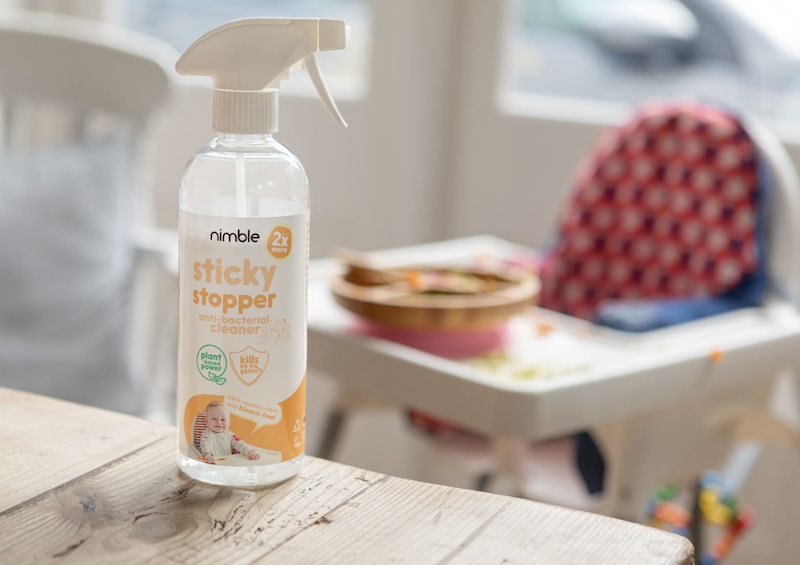
What should you look out for when buying household cleaning products?
As already mentioned, the best way to hygienically clean your home is to remove as many of the germs as possible then use a disinfectant to kill any that remain. Soap and detergent combined with hot water are perfect for the first step. For the second step, the key statements to look out for on cleaning product labels are ‘antibacterial’ and ‘disinfectant’.
If you have young children at home, and are concerned about the amount and types of chemicals you are using around them, here are some tips to consider:
1. Read the warning symbols – Unfortunately, manufacturers of cleaning products aren’t required to declare each ingredient they use, so the warning symbols are your best bet to know the risks your family will be exposed to
2. Keep away from children – Sometimes you don’t really have a choice but to use strong cleaning products (e.g. bleach toilet cleaners), so make sure they are out of children’s reach
3. Try using eco cleaning products – They are made with plant-based ingredients, which are gentler on the skin and better for the environment, and don’t always have to cost more
4. Avoid highly fragranced products – The fumes can be irritating for young lungs. Even essential oils in a diffuser are actually considered air pollutants. Try indoor plants and flowers to make your home smell nice
5. Avoid ingredients that deposit – When choosing a clothes detergent, avoid ones that have enzymes and optical brighteners because they deposit on fabrics, which can cause sensitive skin to flare up
What about laundry? 3 things to avoid in detergent for children
Having a family to look after can sometimes feel like you've got a launderette in your own home! But did you know that kids can absorb more germs and get infections more easily from deposits on fabrics because their skin barrier is thinner than a grown-ups? Here are our tips to choose your baby detergent:
1. Non-bio vs. Bio
When a laundry detergent label says ‘bio’, it contains enzymes. And yes, you guessed it right, ‘non- bio’ means it is without enzymes. But why does this matter? What do enzymes do? And why are we told not to use bio detergents for baby’s clothes? Enzymes are basically additional ingredients manufacturers put in to have stronger stain-removing power. In essence, enzymes are not harmful, but they become a problem when they gets trapped and deposited in the fibres of your baby’s clothes. They can potentially irritate a baby’s skin or even a full-grown adult with sensitive skin. However, if your detergent is already formulated well, these enzymes are not necessary anymore.
2. Optical brighteners
Most, if not all laundry detergents contain optical brighteners. Optical brighteners essentially deposit on fabrics and make them appear brighter to the eye by making light bounce off strongly. Like magic, a dingy-looking white cloth can look dazzling white when loaded with optical brighteners. Similar to enzymes, these optical brighteners are not bad, but they become a problem when they touch and rub baby’s skin or even a full-grown adult with sensitive skin. You’re probably already seeing a pattern here. Anything deposited in the fabrics could be an irritant, so it’s best to avoid them.
3. Fragrance
Sadly, fragrance in laundry detergents does get left behind in clothes. So you should stay away from fragranced detergents or fabric softeners. Still, we understand that the fragrant smell of newly washed laundry brings so much delight in this otherwise seemingly thankless chore, so we don’t want to take this simple joy away from you! We would advise that you look for laundry detergents with an allergen-free fragrance. Fragrances are made up of hundreds of individual ingredients blended together, and some of these ingredients can irritate when present in high amounts.
Can I really find a baby laundry detergent that ticks all the boxes?
Most commercially available laundry detergents would usually tick just one box, which is the ‘non- bio’ bit. If you find that this already suits your needs, then this is good news. But in case you still find yourself or your baby having irritated skin, why don’t you try out Nimble Laundry Lover? It is non-bio, does not contain optical brighteners, and has a delightful baby fragrance free from allergens. Von Sy, the founder and in-house chief chemist, developed Nimble Laundry Lover himself to be suitable for newborn clothes. Plus it’s vegan, cruelty-free and made in the UK!
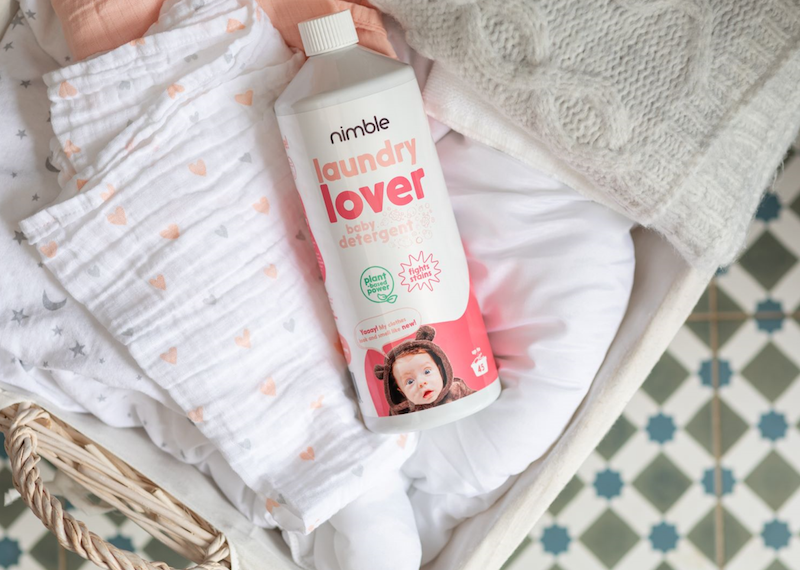
About Nimble:
Stress-free cleaning - because being a parent is a messy business, Nimble has created a range of house cleaning products that are specially developed for safe usage around young ones. This means no harsh chemicals, allergens or skin-irritating ingredients. Just the power of plants to be gentle on skin and get the job done! From laundry essentials to anti-bac cleaners and bottle cleaner, their award-winning products are made in the UK, certified vegan and cruelty-free. On your side for the messy moments!
Nimble is also available in Tesco, Sainsbury’s, Ocado and Amazon.
Thank you Nimble for demystifying germs, household cleaning and detergents and for keeping our little people's skin healthy and happy!
Mini First Aid x


